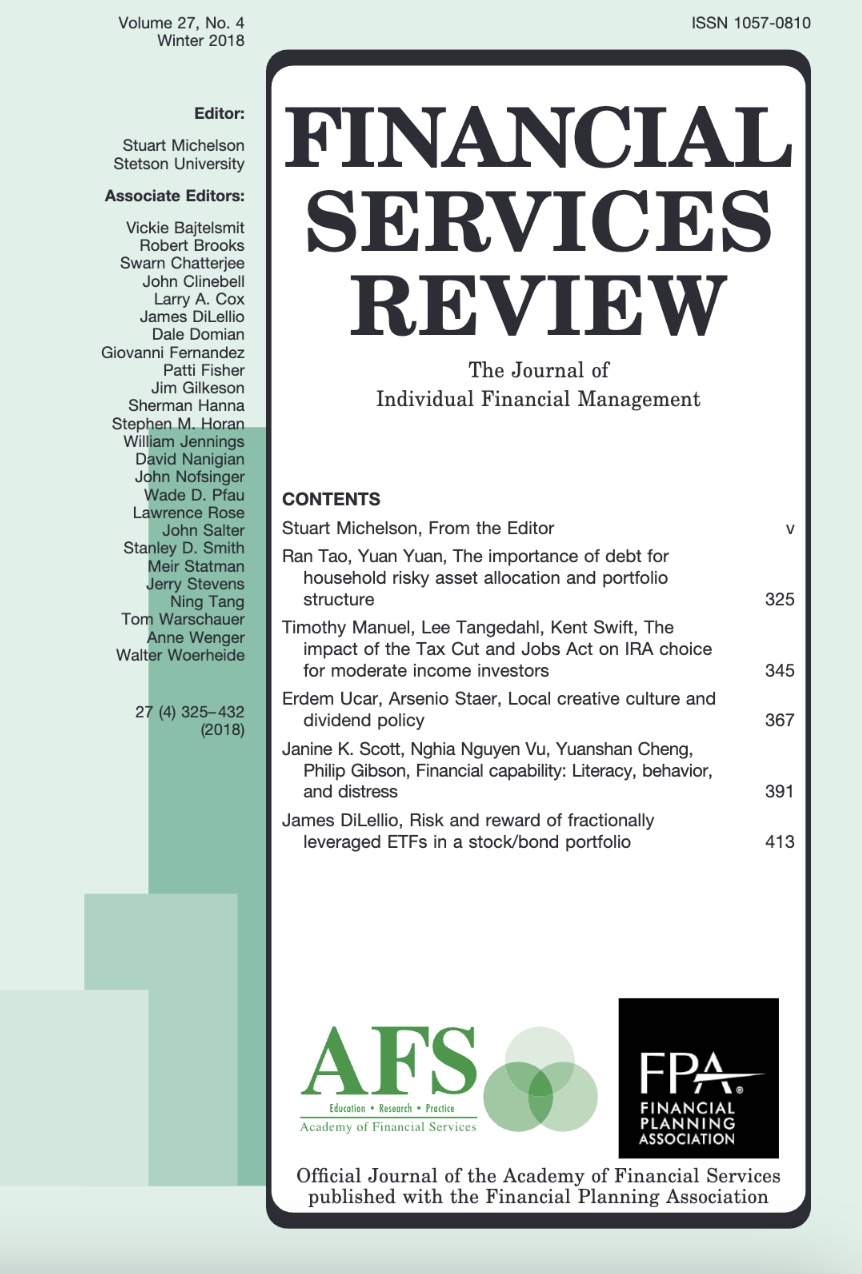Financial capability
Literacy, behavior, and distress
DOI:
https://doi.org/10.61190/fsr.v27i4.3406Keywords:
Literacy, Financial behavior, Financial distressAbstract
We inspect the influence of individual financial knowledge and financial behavior on the proba- bility of experiencing financial distress. Using the 2015 National Financial Capability Study, we examine three measures of financial distress related to bill payment, retirement saving, and being late with a mortgage payment. Financial literacy and financial behavior indices are constructed using questions from the survey that pertain to financial knowledge (ranging in complexity) and financial decision-making. In addition to the influence of socioeconomic factors, the conclusion suggests that financial literacy and positive behavior reduces financial distress stemming from simple financial matters. However, the opposite is observed for more complex financial decisions.
Downloads
Published
How to Cite
Issue
Section
License
Copyright (c) 2018 Academy of Financial Services

This work is licensed under a Creative Commons Attribution-NonCommercial 4.0 International License.
Author(s) retain copyright and grant the Journal right of first publication with the work simultaneously licensed under a Creative Commons Attribution-NonCommercial 4.0 International License that allows to share the work with an acknowledgment of the work's authorship and initial publication in this Journal.
This license allows the author to remix, tweak, and build upon the original work non-commercially. The new work(s) must be non-commercial and acknowledge the original work.


